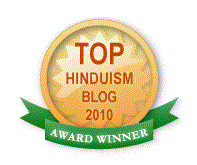Karwa Chauth is celebrated on the fourth day (chauth is the fourth day) after the full moon in the Kartika month of the Hindu calendar. Karwa means a pot and Chauth refers to the fourth day. This festival is mostly celebrated in the North India. This festival is celebrated by married ladies for the welfare and long lasting lives of their husbands. On this day, married ladies observe strict fasting. Married women leave the fast only after they see their husband before which they see the moon through a sieve.
There are many tales related to Karwa Chauth in Indian Mythology. Some of them are as listed below:
Story of Queen Veeravati: Once upon a time there was a queen by the name of Veeravati. She had seven brothers who were very caring and loving. On the first Karwa Chauth after her marriage she went to her parents place and started on fast before sunrise and observing fast and could not bear her hunger. Observing their sister facing the problem of hunger, her brothers tried to deceive her by showing a full moon after which she broke her fast, though the moon did not appear till then.
After this she got to know that her husband had fallen ill and rushed to her kingdom. On her way to the kingdom she met Lordess Parvati who informed that her husband has died. Veeravati then asked to forgive and give back his life. Parvati asked Veeravati to be follow Karwa Chauth very faithfully after which Veeravati got back her husband alive.
Story of Draupati in Mahabharata: Once Arjuna went to Nilgiris for penance and the remaining Pandavas faced many problems. Unable to see her husbands’ problems, Draupati approached Lord Krishna for help. Krishna recalling a similar situation faced by Parvati, advises Draupati to be on a strict fast on the day of Karwa Chauth and pray for the long lives of her husbands, as did Parvati. Draupati sincerely followed the advice of Lord Krishna and could rescue her husbands’ from the problems.
Story of Karwa There was lady named Karwa who was a great Pati – vrata (deeply devoted to her husband). One day her husband was caught by a crocodile while taking bath in the river. Karwa used a cotton yarn to bind the crocodile and prayed god Yama (death god) to kill the crocodile and send it to hell. Yama was not ready to do that and so she scared Yama that she would curse him using her Pati-vrata powers. Yama, being scared of her, granted her the wish. The day when this happened was the fourth day after the full moon in the Kartik month of the Hindu calendar. It is on this day that Karwa Chauth is celebrated by all married ladies.
Karwa Chauth day Puja:
Married Ladies get up early in the morning and eat food prepared by their mother in laws. This food is called as “Sargi”. They pray to Gods Shiva, Parvati, Ganesha and Kartikeya for the long lives of their husbands. After this they are on a strict fast. They even abstain from water till they see the moon in the night thru a sieve. They end the fast only after worshipping moon and seeing the moon through a sieve. After this the next they see is their husband.
Ladies take this occasion to dress up well and enjoy the ceremony. On this day ladies apply mehendi decorating their hands and feet. After this ladies receive gifts from their mother-in-law. They decorate a Karwa (pot) for the puja very artistically by painting it form outside, putting some sweets, chocolates, a small handkerchief.
Lordess Parvati is prayed with lots of flowers on this day by groups of ladies sitting around the Lordess. A red colored thread is tied around the Karwa. Ladies put the Karwa in front of them while performing puja. An elderly lady also holds the Karwa and narrates the stories related to Karwa Chawth to the ladies.
After the puja is done, ladies look at the moon and leave the fast.


